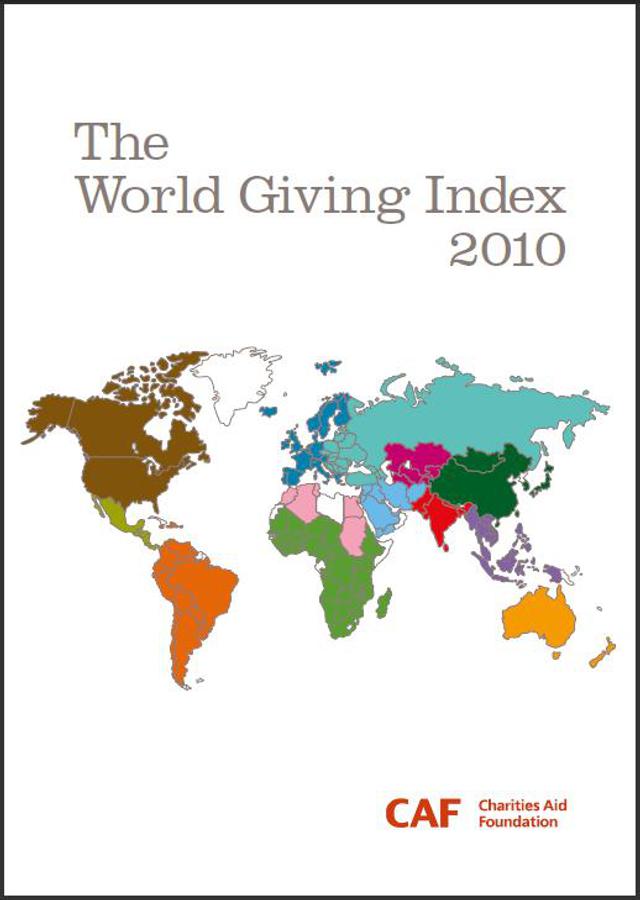Is Asian charity different from Western charity?
Looking for some insight into fundraising in Asia? Mitchell Hinz has some advice.
- Written by
- SOFII
- Added
- September 22, 2011


If you are just learning that the economic world is shifting focus from the West to the East, well, then you probably shouldn’t even be reading this blog (you’re a fundraiser!) But as you know, it is. And the shift is enormous.
The swing to the East is centred, of course, on Asia’s two biggest countries China and India but as countless Economist articles point out many countries with less than a billion people (!) have a lot going on as well. For example most people don’t know that Singapore, where I now live, boasts one of the world’s highest GDP per capita - almost US$ 60,000 per person (one in six households has a net worth of more than US$ 1 million). However, Indonesia is still the region’s largest economy despite having far higher poverty rates. The GDP per capita in Indonesia is only a bit over US$ 4,600 per person (almost 1,500% lower!). Conclusion: Singapore has lots of rich people. Indonesia has lots of poor people but a fair number of rich people, too.
If you were a fundraiser (which is a fair assumption, since you’re still reading) the question is - where should you be fundraising?
Well, if Asian charity is like Western charity, I would argue that you need to go where the numbers are - Indonesia. It’s the world’s fourth most populous country, with over 238 million people. Jakarta alone, from where I’m writing this, has almost 13 million people and the island of Java, where it sits, is the world’s most populated with 142 million. Across the street from my hotel is Plaza Indonesia and the anchor store, taking up three stories, is Louis Vuitton the high, high, high-end French luxury leather goods and fashion house. They seem to have plenty of customers.
Singapore, on the other hand, is teeming with wealth. Singapore’s economy grew (depending on which index you use) somewhere close to 15% last year and job creation is steady. It boasts one of the fastest growing financial sectors, the world’s richest casino per square foot (the Marina Bay Sands, which paid off the debt on its jaw-dropping three-tower building within a year and a half!) and has more luxury cars per capita than anywhere else in the world. My wife recent volunteered at a charity helping them sort their direct mail responses and came across several S$10,000 checks (that’s $8,000 US dollars, still not anything to sneeze at). Those are cold acquisition responses!
Perhaps, to a seasoned fundraiser like you, the answer is obvious. Do individual fundraising in Indonesia, and major donor fundraising in Singapore. Good guess. Now let’s see what else is at play.
First, you’re right about one thing - going with the numbers. Anyone who has been in this industry for more than a year knows that the world of NGO/charity fundraising is more about small numbers than big ones. When Bill Gates and Warren Buffet combined their incomes to create the world’s richest foundation their combined gifts totalled US$ 75 billion dollars. But each year in the US, individuals donate over US $300 billion in small-sized gifts. (The Gates Foundation “makes a difference” because all that money is moving in one direction programmatically.) I’m not saying major donor giving should be ignored (the Indian diaspora, especially in the US, is giving hundreds of millions per year to help build their mother country as all that money “goes home to help"). But global charity giving is a river of small gifts not a search for the Hope Diamond.
So let’s get back to our decision of Indonesia vs. Singapore. Is there anything we missed? Yes. How about “propensity to give”?

In 2010, Charities Aid Foundation (CAF) a non-profit formed and dedicated to helping non-profits (mostly in fundraising) produced The World Giving Report, an index of giving based on Gallup polls carried out each year around the globe. It ranks countries’ propensity to give (both monetarily and voluntarily). So how did our big Asian economic drivers India and China fare in this ranking? Not so well actually.
China achieved a ranking of 147th out of 153 countries. India didn’t fare much better ranking 134th. Indonesia, on the other hand, ranked 50th higher than any other country in its group besides Thailand. Singapore ranked 91st (makes you think, right?) For comparison the UK is ranked 8th, Netherlands 7th and the largest charity market in the world, the US, is only ranked 5th. Top is Australia and New Zealand since you asked.
Does this mean anything? Well, yes, of course. But the propensity to give and share is only relevant to a fundraiser if there is a large enough demographic group that is ready to make a large enough gift (like 4 pounds per month or an annual gift of US $35). Can you get those kinds of gifts out of Indonesia? Or how about Malaysia, with a much higher GDP/capita than Indonesia and a regional leader in mid-manufacturing? Does it also have a sizable enough rising middle class to make fundraising profitable?
I’m not going to tell you that, not yet. You have to tune in for future installments to learn what I know. What I will share with you is some statistics that will keep you reading about Asia. Guess how much money was raised in the Asia Pacific countries by seven leading international NGO’s in 2004? Answer: less than US$ 200 million. And in 2009, 5 years later? Double that, just over US$ 420 million. That’s a 100 per cent increase in six years. Show me what other markets are doing that.
I’ll talk more about the role of charity in Asia next time. Until then, happy fishing.
© 101fundraising 2011



















